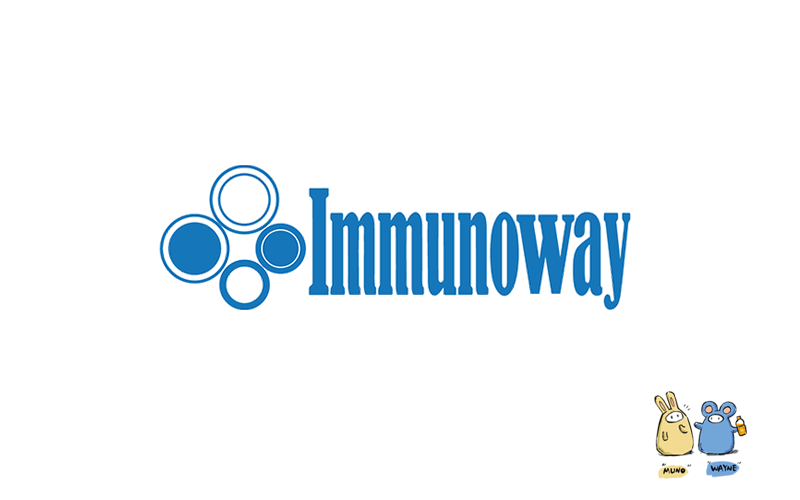
Catalog: YA0523
Size
Price
Status
Qty.
200μg
$600.00
3 weeks
0
100μg
$340.00
3 weeks
0
40μg
$190.00
3 weeks
0
Add to cart


Collected


Collect
Main Information
Target
CD64
Reactivity
Human
Applications
FC, ELISA
MW
45kD (Observed)
Conjugate/Modification
Unmodified
Detailed Information
Recommended Dilution Ratio
ELISA 1:5000-100000; Flow Cyt 1-2μg/Test
Formulation
Phosphate-buffered solution
Source
Camel, chimeric fusion of Nanobody (VHH) and mouse IgG1 Fc domain , recombinantly produced from 293F cell
Specificity
This recombinant monoclonal antibody can detects endogenous levels of CD64 protein.
Purification
Recombinant Expression and Affinity purified
Storage
-15°C to -25°C/1 year(Avoid freeze / thaw cycles)
Concentration
Please check the information on the tube
MW(Observed)
45kD
Modification
Unmodified
Clone Number
PN0278
Related Products
Antigen&Target Information
Immunogen:
Purified recombinant human CD64
show all
Specificity:
This recombinant monoclonal antibody can detects endogenous levels of CD64 protein.
show all
Gene Name:
FCGR1A FCG1 FCGR1 IGFR1
show all
Protein Name:
High affinity immunoglobulin gamma Fc receptor I (IgG Fc receptor I) (Fc-gamma RI) (FcRI) (Fc-gamma RIA) (FcgammaRIa) (CD antigen CD64)
show all
Other Name:
High affinity immunoglobulin gamma Fc receptor I ;
IgG Fc receptor I ;
Fc-gamma RI ;
FcRI ;
Fc-gamma RIA ;
FcgammaRIa ;
CD antigen CD64 ;
IgG Fc receptor I ;
Fc-gamma RI ;
FcRI ;
Fc-gamma RIA ;
FcgammaRIa ;
CD antigen CD64 ;
show all
Background:
This gene encodes a protein that plays an important role in the immune response. This protein is a high-affinity Fc-gamma receptor. The gene is one of three related gene family members located on chromosome 1. [provided by RefSeq, Jul 2008],
show all
Function:
Function:High affinity receptor for the Fc region of immunoglobulins gamma. Functions in both innate and adaptive immune responses.,online information:FCGR1A mutation db,PTM:N-glycosylated.,PTM:Phosphorylated on serine residues.,similarity:Belongs to the immunoglobulin superfamily. FCGR1 family.,similarity:Contains 3 Ig-like C2-type (immunoglobulin-like) domains.,subcellular location:Stabilized at the cell membrane through interaction with FCER1G.,subunit:Interacts with FCERG1; forms a functional signaling complex. Interacts with FLNA; prevents FCGR1A degradation. Interacts with EPB41L2, LAT and PPL.,tissue specificity:Monocyte/macrophage specific.,
show all
Cellular Localization:
Cell membrane ; Single-pass type I membrane protein . Stabilized at the cell membrane through interaction with FCER1G.
show all
Tissue Expression:
CD8 on thymus-derived T-cells usually consists of a disulfide-linked alpha/CD8A and a beta/CD8B chain. Less frequently, CD8 can be expressed as a CD8A homodimer. A subset of natural killer cells, memory T-cells, intraepithelial lymphocytes, monocytes and dendritic cells expresses CD8A homodimers. Expressed at the cell surface of plasmacytoid dendritic cells upon herpes simplex virus-1 stimulation.
show all
Signaling Pathway
Organismal Systems >> Immune system >> Hematopoietic cell lineage
Organismal Systems >> Immune system >> Antigen processing and presentation
Organismal Systems >> Immune system >> T cell receptor signaling pathway
Human Diseases >> Immune disease >> Primary immunodeficiency
Environmental Information Processing >> Signaling molecules and interaction >> Cell adhesion molecules
Reference Citation({{totalcount}})
Catalog: YA0523
Size
Price
Status
Qty.
200μg
$600.00
3 weeks
0
100μg
$340.00
3 weeks
0
40μg
$190.00
3 weeks
0
Add to cart


Collected


Collect
Recently Viewed Products
Clear allPRODUCTS
CUSTOMIZED
ABOUT US
Toggle night Mode
{{pinfoXq.title || ''}}
Catalog: {{pinfoXq.catalog || ''}}
Filter:
All
{{item.name}}
{{pinfo.title}}
-{{pinfo.catalog}}
Main Information
Target
{{pinfo.target}}
Reactivity
{{pinfo.react}}
Applications
{{pinfo.applicat}}
Conjugate/Modification
{{pinfo.coupling}}/{{pinfo.modific}}
MW (kDa)
{{pinfo.mwcalc}}
Host Species
{{pinfo.hostspec}}
Isotype
{{pinfo.isotype}}
Product {{index}}/{{pcount}}
Prev
Next
{{pvTitle}}
Scroll wheel zooms the picture
{{pvDescr}}

















